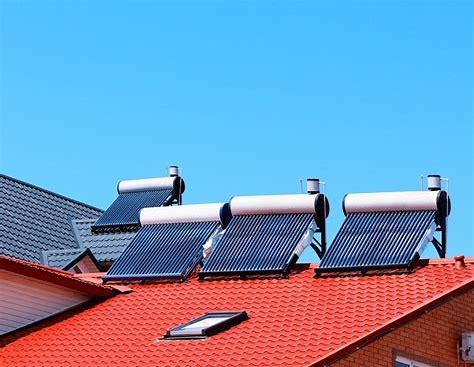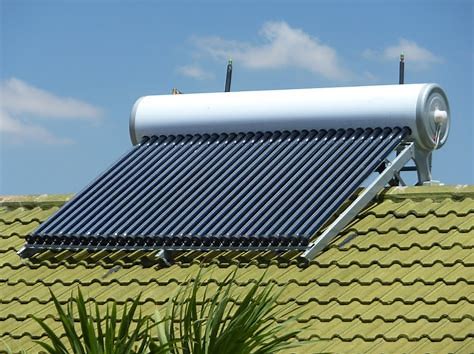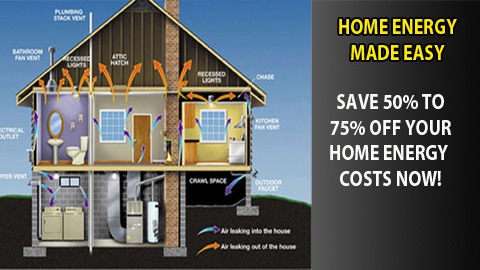
As a solar heating system expert, I have seen firsthand how this technology can revolutionize the way we heat our homes and businesses. Solar heating systems use energy from the sun to provide warmth, making them an incredibly efficient and sustainable alternative to traditional heating methods.
Installing a solar heating system not only reduces your carbon footprint but also saves you money on energy bills in the long run.
In this article, I will discuss the benefits of solar heating systems and how they work to keep your home or business comfortable all year round.
So let’s dive in and explore the world of solar heating!
Advantages Of Using Solar Energy For Heating
As a solar heating system expert, I can confidently say that using solar energy for heating has numerous advantages.
Firstly, it is a renewable and sustainable source of energy that does not contribute to greenhouse gas emissions, making it an environmentally friendly choice. This means that by installing a solar heating system in your home or business, you are doing your part for the environment while also reducing your carbon footprint.
Secondly, solar energy is free once you have installed the necessary equipment. Unlike traditional heating systems which require constant fuel replenishment, solar energy relies solely on sunlight to generate heat. This means that over time, a solar heating system will pay for itself through savings on utility bills. Additionally, with proper maintenance and care, these systems can last up to 30 years or more.
Considering all these benefits, switching to a solar-powered heating system makes both economic and environmental sense.
As we move forward in discussing components of a solar heating system, it’s important to note the various types of panels available and how each one works differently to harness the power of sunlight.
Components Of A Solar Heating System

When it comes to solar heating systems, there are several components that work together seamlessly to provide a reliable and efficient source of heat.
These components include the solar collector, storage tank, circulation pump, control valve, and backup heater.
The heart of any solar heating system is the solar collector.
This component absorbs energy from the sun and converts it into heat which is then transferred to a fluid circulating through the collector’s tubes.
The heated fluid is then pumped through a series of pipes into a storage tank where it can be used as needed.
To ensure optimal performance, these components must be carefully selected and installed by trained professionals who understand the unique requirements of each individual installation.
How Solar Heating Systems Work
Solar heating systems are a great way to reduce energy consumption and save money on utility bills. But how exactly do they work? Let’s take a closer look.
First, solar panels are installed on the roof or in another location where they can receive direct sunlight. The panels absorb the sun’s energy, which is then converted into heat. This heat is transferred to a fluid, such as water or antifreeze, that circulates through pipes within the system.
From there, the heated fluid travels to a storage tank where it can be used for hot water or space heating needs. Here are some key elements of how solar heating systems operate:
- Solar collectors: These collect sunlight and convert it into thermal energy.
- Heat exchangers: These transfer the collected heat from the collector to the fluid circulating through the system.
- Storage tanks: These hold onto the heated fluid until it’s needed for use.
Overall, solar heating systems work by harnessing renewable energy from the sun and using it to provide warmth and hot water without relying on traditional fossil fuels. In our next section, we’ll discuss what you need to know about installing and maintaining these systems for optimal performance over time.
Installation And Maintenance Of Solar Heating Systems

Installing a solar heating system is as easy as pie! Well, maybe not quite that simple, but with the right tools and knowledge, it can be a breeze.
Before starting any installation project, make sure to do your research and plan accordingly. Assess the area where you want to install the system, taking into account factors such as sun exposure and shading.
Once you have determined the best location for your solar heating system, it’s time to get started on the actual installation process. This may involve securing panels onto rooftops or other surfaces, connecting pipes and wiring components together correctly, and ensuring that everything is properly sealed and insulated.
Remember: proper maintenance of your solar heating system will ensure its longevity and effectiveness in providing energy-efficient warmth for years to come!
Conclusion
In conclusion, as a solar heating system expert, I highly recommend using this form of renewable energy for your home or business.
The advantages are numerous; not only does it reduce your carbon footprint and help the environment, but it can also save you money in the long run.
When it comes to installation and maintenance, it’s important to choose a trusted technician who has experience with these systems.
As the saying goes, ‘An ounce of prevention is worth a pound of cure.’
Regular upkeep will ensure that your solar heating system runs efficiently and lasts for many years to come.
Don’t hesitate to invest in this sustainable solution – both for the planet and for your wallet.

